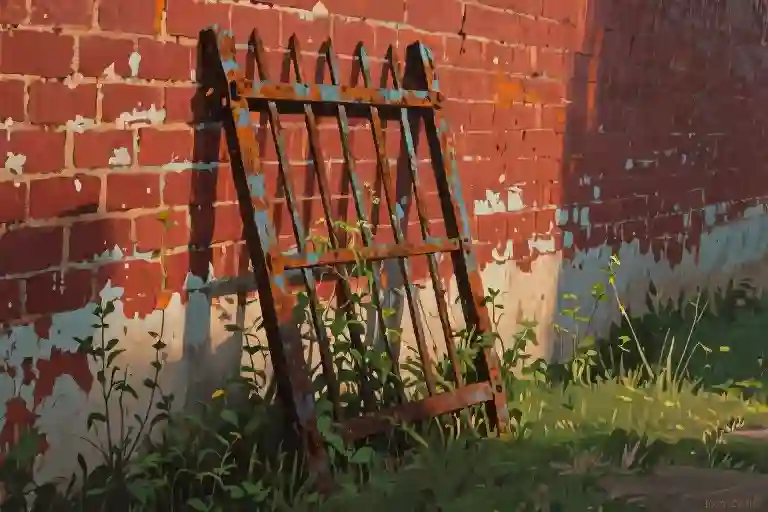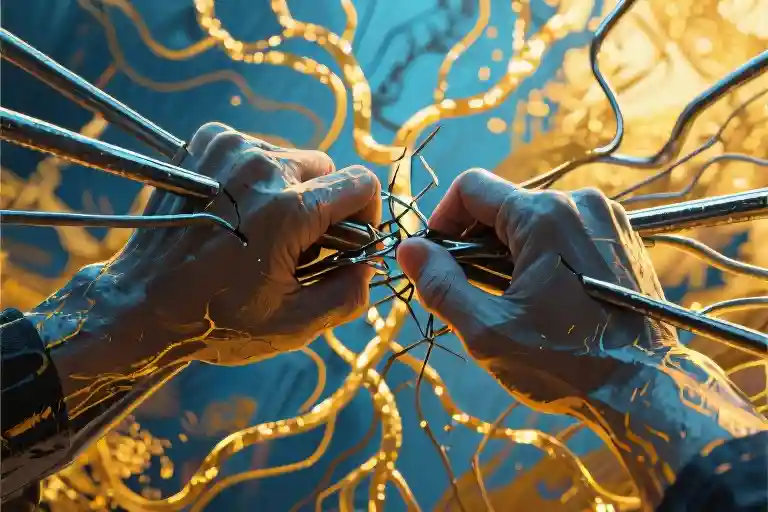The email notification blinked on my phone screen at 3:17am. Hospital. Switzerland. Cardiac arrest. The words blurred as my fingers fumbled to book the first flight out of Sydney. By the time I landed in Zurich twelve hours later, the man who’d built billion-dollar companies and skied black diamond slopes with equal fearlessness was gone. Mike, my husband of twenty-three years, had become another statistic in the silent epidemic of ADHD burnout fatalities.
Our son—the boy we’d nicknamed ‘The Rock Star’ when his preschool teachers marveled at his ability to turn cardboard boxes into spacecraft—was the first to get diagnosed. Growing up on Bondi Beach, his neurodivergence manifested as creativity: building elaborate sandcastle kingdoms while other kids played soccer, memorizing every dinosaur fact ever published. Australia celebrated his differences. Then we moved to Switzerland when he turned thirteen.
In a country where precision extends to alphabetized spice racks and train schedules measured in seconds, The Rock Star’s neurology suddenly became pathological. Teachers complained about his ‘excessive imagination.’ Classmates mocked his stimming. The same traits that made him brilliant at music composition—hyperfocus, sensory intensity, nonlinear thinking—now earned him detention slips. It took three psychiatrists and a suicide attempt before we got the dual diagnosis: ADHD combined with autism spectrum disorder.
That’s when the articles started flooding Mike’s inbox. Scientific papers about executive dysfunction. Blog posts by neurodivergent adults describing their ‘lightbulb moments.’ I highlighted passages about rejection-sensitive dysphoria—that visceral reaction to criticism Mike displayed whenever I mentioned the Everest of unopened mail in his office. The way his jaw would clench as he insisted ‘systems are for mediocre people’ while searching for his keys for the forty-seventh time that week.
He never clicked those links. Not when the research explained his legendary work binges (hyperfocus), nor when it contextualized his abrupt career pivots (impulsivity meets adaptability). Certainly not when studies showed 78% of undiagnosed ADHD adults develop comorbid anxiety or depression by age forty-five. The bottle of Ritalin he ‘borrowed’ from our son’s prescription? Just curiosity, he claimed. Never mind that he’d worked straight through two family Christmases coding a machine learning prototype.
What terrifies me now isn’t just the loss—it’s how textbook his collapse was. The International ADHD Alliance identifies three burnout stages in high-functioning individuals: exhaustion (working 100-hour weeks), detachment (‘forgetting’ anniversary dinners), and finally, efficacy collapse (missing payroll while insisting everything’s fine). Mike hit all three before his forty-ninth birthday. His Swiss colleagues called it ‘stress.’ The Australian consulate suggested meditation. The truth? A neurodivergent brain forced into neurotypical systems until it short-circuited.
Last month, The Rock Star released his debut album. The liner notes read: ‘For Dad—who taught me to hear the music between the beats.’ I wish Mike could’ve seen how beautifully their minds worked in parallel: our son channeling his neurological differences into art, just as his father had harnessed them for innovation. But potential requires oxygen to flourish. And denial, we learned too late, suffocates faster than any avalanche.
The Crash: When Denial Avalanches
Mike’s hands trembled as he packed another unmarked pill bottle into his carry-on. ‘Just something to help me focus during the Tokyo meetings,’ he muttered, avoiding my eyes. This was three weeks before the avalanche. Three weeks before his high-functioning ADHD brain—the same one that built million-dollar ventures and charmed investors—would collapse under the weight of decades of untreated symptoms.
The Final Descent
The warning signs had been building like pressure behind a dam:
- The midnight pacing: His restless legs tracing circles around our Zurich apartment, mind racing through spreadsheets while his body begged for sleep
- The medication experiments: First ‘borrowing’ our son’s Ritalin, then mixing it with mirtazapine like some dangerous corporate cocktail
- The calendar blackouts: Missed anniversaries evolving into forgotten investor meetings—his legendary adaptability stretched too thin
Yet every intervention attempt hit the same wall. ‘I don’t need headshrinkers,’ he’d laugh, adjusting his Rolex. ‘This is just how winners operate.’ The denial wasn’t stubbornness—it was survival. For fifty years, his ADHD traits had been rewarded at work (hyperfocus = productivity) and tolerated at home (forgetfulness = ‘creative genius’). Why fix what wasn’t broken?
The Avalanche Moment
Then came the Tuesday that changed everything. Not with drama, but with eerie quiet. I found him staring blankly at his LinkedIn profile—3,000+ connections, Top Voice badge gleaming—tears cutting through the pixelated perfection. ‘Raoul won’t stop,’ he whispered, naming the cruel inner critic we’d later understand as rejection sensitivity dysphoria.
In that moment, the dam broke. Years of:
- Masking (mimicking neurotypical behaviors until his face ached from fake smiles)
- Compensating (using his ADHD hyperfocus to work 80-hour weeks)
- Self-medicating (replacing therapy with Scotch and stimulants)
…collapsed like glacial ice shearing off a mountain. The corporate warrior who’d scaled the Fortune 500 couldn’t outrun his neurochemistry any longer.
Buried Alive
What followed wasn’t depression—it was neurological overwhelm. His brain’s executive functions short-circuited:
- Decision paralysis: Stuck choosing between showering or checking email
- Time blindness: Losing hours staring at the same spreadsheet cell
- Emotional flooding: Angry tears when the barista misspelled his name
The cruelest irony? These were the same traits that made him extraordinary:
| Collapse Symptom | Former Superpower |
|---|---|
| Decision paralysis | Lightning-fast intuition |
| Time blindness | Immersive hyperfocus |
| Emotional floods | Profound empathy |
By the time he agreed to see a doctor (two days before the end), his nervous system was firing distress signals like a sinking ship. The prescription pad came out too late—the avalanche had already started moving.
Last Transmission
His final text to me read: ‘Tell the team I’ve gone dark. Need to reboot.’ Typical Mike—framing neurological crisis as some tech glitch. The mountain guide found his phone still glowing in the snow, unsent messages to our son about drumming techniques. Even in freefall, his ADHD brain kept making connections.
What no one tells you about ADHD burnout is how fast the snow settles. One minute they’re your vibrant, chaotic love; the next, you’re digging through the wreckage of what denial cost.
Two Countries, Two Childhoods
Our son’s childhood unfolded like two distinct novels – one written in the vibrant ink of Australian sunshine, the other in the precise graphite of Swiss structure. In Bondi Beach, they called him ‘The Rock Star’ before he ever touched an instrument, his ADHD traits celebrated as charming eccentricities. Kids ran barefoot in packs there, creativity dripping like saltwater from their sun-bleached hair. His forgetfulness? Endearing. His impulsive adventures? Neighborhood legends. The neurodiversity that would later become a diagnostic code simply made him ‘that imaginative Bondi kid’.
Then came Switzerland.
I’ll never forget watching his shoulders tense that first week in Zurich, his quick wit slowing like a record player dragged to the wrong speed. Where Australia saw ‘spirited’, Switzerland saw ‘disruptive’. His colorful mind crashed against systems where pencils sat alphabetized and playground games followed municipal schedules. The same traits that earned him admirers on Bondi Beach now made him a target – not just from peers, but from institutions measuring conformity with clinical precision.
The Cultural Lens on Neurodiversity
What fascinated me most wasn’t just the differing reactions, but how environment reshaped the expression of his neurodivergence:
| Trait | Australia (Accepted) | Switzerland (Pathologized) |
|---|---|---|
| Energy | “Enthusiastic leader” | “Disruptive student” |
| Creativity | “Artistic soul” | “Distracted underachiever” |
| Directness | “Refreshing honesty” | “Socially inappropriate” |
This cultural whiplash forced an uncomfortable realization: There are no ‘universal’ ADHD or autism traits – only behaviors filtered through societal expectations. The same neurological wiring that made him a charismatic ringleader in Sydney rendered him an outsider in Zurich.
When Systems Collide With Brains
The Swiss educational framework operates like precision clockwork – magnificent unless your brain runs on solar time. We watched helplessly as:
- Rigid schedules clashed with his time blindness
- Silent classrooms amplified his restless movements
- Standardized testing penalized his nonlinear thinking
Yet in this struggle lay our first clues about Mike. Watching our son navigate these systems, I began recognizing familiar patterns – not just in our child, but in the man I’d loved for decades. The cultural contrast didn’t create their neurodivergence, but it certainly determined whether those traits became superpowers or shackles.
The Generational Echo
Most heartbreaking was seeing our son internalize Switzerland’s judgment. The boy who once proudly marched to his own drum now begged us, “Make me normal.” His desperate attempts to suppress natural behaviors created the same unsustainable tension we’d later see in Mike – the exhausting performance of neurotypicality that ultimately contributes to ADHD burnout.
This chapter of our lives taught me that neurodiversity doesn’t exist in a vacuum. Like plants that thrive or wither based on soil chemistry, neurodivergent minds reveal their beauty or brokenness through interaction with environment. It’s a lesson that might have saved Mike, had we understood sooner that the problem wasn’t his brain – but the world’s inability to make space for its magnificent differences.
The ADHD Paradox: Genius and Flaw
Mike’s life was a living testament to the dual nature of neurodiversity – where every perceived weakness hid extraordinary strength, and every gift carried hidden costs. This paradox defines the ADHD experience, particularly for high-functioning individuals navigating a world built for neurotypical minds.
The Double-Edged Sword of Neurodiversity
| What Society Sees | Hidden Superpower | Unseen Cost |
|---|---|---|
| Chronic forgetfulness | Creative problem-solving | Missed milestones |
| Reckless impulsivity | Adaptive brilliance | Dangerous risks |
| Inability to focus | Laser hyperfocus | Family neglect |
| Emotional sensitivity | Profound connections | Rejection pain |
| Restless energy | Visionary thinking | Chronic burnout |
Mike didn’t lose his keys constantly because he was careless – his mind was too busy connecting concepts most people never associate. That same “scatterbrained” quality made him predict the AI content revolution years before ChatGPT existed. His consulting business thrived during COVID because he could see patterns in market chaos where others saw only panic.
When Strengths Become Liabilities
The traits that made Mike extraordinary also created invisible fractures:
1. The Hyperfocus Trap
When obsessed with a project, he’d work 18-hour days for months, producing groundbreaking results. But this came at the cost of missed birthdays, neglected health, and a lawn that became the neighborhood joke. “I’ll mow it Saturday” turned into three years of unmowed grass.
2. Impulsive Brilliance
His risk-taking built a million-dollar business from scratch during a pandemic. That same trait had him skiing off cliffs (literally) and making business decisions without consulting partners. The man who could pivot a failing company in weeks would stubbornly defend terrible ideas for months.
3. Emotional Whiplash
Mike’s rejection sensitivity dysphoria (common in ADHD) meant criticism felt physically painful. Yet his capacity for joy was equally intense – one compliment could fuel weeks of creative output. This emotional volatility made relationships exhilarating and exhausting.
The High Cost of High Functioning
Society rewards neurodiverse strengths while punishing their accompanying traits. Mike’s professional success masked his private struggles:
- Colleagues praised his “innovative thinking” while family begged him to stop jumping to new projects
- Clients valued his “passionate intensity” that left him emotionally drained
- Friends admired his “spontaneity” that hid profound executive dysfunction
For every boardroom triumph, there was a domestic crisis. The same brain that engineered complex business solutions couldn’t remember to put keys in the bowl by the door. The visionary who predicted industry trends missed obvious personal red flags.
Rewriting the Narrative
Understanding ADHD as a difference rather than a defect changes everything. What if we’d seen:
- “Forgetfulness” as a side effect of big-picture thinking?
- “Impulsivity” as rapid adaptability?
- “Hyperfocus” as deep work capacity?
Mike’s story challenges us to separate neurological differences from moral failings. The traits that contributed to his tragic end were the same ones that made him extraordinary. The question isn’t how to “fix” neurodiversity, but how to support it – before brilliance becomes burnout.
Systems That Fail the Different
When Schools Become Conformity Factories
The moment we moved from Bondi Beach to Switzerland, I watched the light dim in our son’s eyes. Where Australian teachers had celebrated his creative storytelling as “gifted,” Swiss educators labeled the same behaviors as “disruptive.” His ADHD-fueled energy—once channeled into drum solos and beachside adventures—now earned detention slips for fidgeting during standardized tests.
Swiss schools operate like precision clocks: every child must fit the same mechanical rhythm. The Rock Star’s neurodivergent mind worked in vibrant brushstrokes, but the system demanded pencil-sharp conformity. When he struggled with rigid homework structures, teachers assumed laziness rather than investigating executive function challenges. His autism-related social misunderstandings became disciplinary issues rather than teaching opportunities.
This institutional rigidity creates what psychologists call “masking fatigue”—the exhausting performance of normality that leaves neurodivergent individuals emotionally depleted. By graduation, many brilliant minds internalize the message that their differences are defects.
Workplace Gasoline on the Burnout Fire
Corporate culture might as well have poured accelerant on Mike’s ADHD traits. His hyperfocus and visionary thinking made him a star performer—until the same qualities triggered collapse. In his global consulting role, 80-hour weeks were badges of honor. The unspoken rule? Mental health sacrifices equal professional dedication.
High-functioning neurodivergent adults face a cruel paradox: their atypical cognitive patterns drive innovation (Mike predicted AI’s content revolution years early), yet workplaces punish the very traits enabling those breakthroughs. Flexible schedules? “Unprofessional.” Sensory accommodations? “High maintenance.” The result? A 2023 Harvard study found neurodivergent employees experience burnout at 3x the rate of neurotypical peers.
Mike’s breaking point came during COVID entrepreneurship. Without corporate structure, his time blindness and impulsivity spiraled. He’d forget meals during hyperfocus sprints, then make reckless financial decisions during dopamine crashes. The business thrived briefly—until his exhausted brain couldn’t compensate anymore.
The Medical System’s Diagnostic Blind Spot
Perhaps most tragically, healthcare systems routinely fail high-functioning neurodivergent adults. Mike displayed textbook ADHD symptoms: emotional dysregulation, chronic lateness, hyperverbal storytelling. Yet because he’d developed coping mechanisms (and could charm diagnosticians), professionals dismissed concerns with variations of “You’re too successful to have ADHD.”
This diagnostic gap has lethal consequences. Undiagnosed ADHD adults face:
- 5x higher risk of accidental death
- 3x greater likelihood of substance abuse
- 70% increased depression rates (Journal of Clinical Psychiatry)
When I begged Mike to seek evaluation, his response echoed societal stigma: “I’m not some dysfunctional kid who can’t sit still.” The system had convinced him neurodiversity equaled deficiency—a belief that ultimately proved fatal.
Rewriting the Rules
Changing these systems requires:
- Education Reform: Teacher training on neurodiversity, alternative assessment methods
- Workplace Revolution: Results-focused cultures over presenteeism, sensory-friendly offices
- Medical Advocacy: Adult ADHD screening tools, neurodiversity-affirming therapy
As Mike’s story proves, maintaining the status quo isn’t just impractical—it’s deadly. When we force square-peg minds into round-hole systems, everyone loses their brightest sparks.
What We Can Do Now
If I Knew Then: A Neurodiversity Survival Guide
Looking back through the lens of grief and newfound understanding, here’s what I wish we’d done differently – and what you can do today to rewrite this story for your family.
For Partners: The 3 Non-Negotiables
- Insist on Professional Evaluation
When ADHD symptoms disrupt daily life (forgetfulness, emotional dysregulation, chronic lateness), treat it like detecting carbon monoxide – invisible but deadly when ignored. Mike’s “I’m fine” was as reliable as a smoke detector with dead batteries. We needed:
- A specialist who understands high-functioning ADHD in adults (not just hyperactive boys)
- Concrete examples of workplace burnout patterns (not just “he’s messy”)
- Family sessions to explain Rejection Sensitivity Dysphoria without triggering defensiveness
- Build Neurodiverse Communication Bridges
Our biggest fights weren’t about love – they were about operating systems. What worked:
- Visual systems for the “blind spots” (a key bowl with motion-sensor lights)
- Scheduled “idea dumps” for his racing thoughts (voice notes he could send anytime)
- Code words for RSD meltdowns (“Raoul alert” meant pause the conversation)
- Protect the Burnout Buffer
ADHD brains crash harder. We should have:
- Scheduled mandatory downtime (not vacations – actual screen-free rest)
- Created an “energy budget” for commitments (like managing spoons in chronic illness)
- Had emergency protocols (when the 3am work binges started)
For Organizations: Beyond Accommodations
Mike’s corporate success masked the toll of compensating for neurodivergence in neurotypical systems. Companies serious about preventing ADHD burnout need:
Cultural Shifts
- Reframe “Professionalism”
Punishing lateness but rewarding hyperfocus perpetuates boom-bust cycles. Measure output, not arbitrary timelines. - Normalize Cognitive Diversity
Like left-handed scissors, provide: - “Focus hours” with no meetings
- Written + verbal instructions
- Noise-canceling headphone allowances
Structural Safeguards
- Burnout Risk Assessments
Track warning signs like: - Vacation days unused
- After-hours email patterns
- Over-reliance on stimulants (coffee counts)
- Neurodivergent Mentorship
Pair senior ADHD employees with juniors to share: - Calendar hacks
- Meeting workarounds
- Career path navigation
Immediate Action Steps
1. Diagnosis Roadmap
- Adult ADHD Screeners (WHO-approved self-tests)
- Specialist Directories (CHADD, AADPA)
- Sliding-Scale Clinics (university psychology programs)
2. Relationship Toolkits
- The “Both Are True” Framework
“Your creativity inspires me AND the chaos exhausts me” - Nonviolent Communication Scripts
For RSD episodes: “I see you’re upset. Let’s pause and revisit this after dinner.”
3. Workplace Advocacy
- Sample Accommodation Requests
“I do my best coding before noon. Can we adjust standups?” - HR Policy Templates
Neurodiversity inclusion in wellness programs
The Unanswerable Question
“What if we’d known earlier?” will always haunt me. But this I know: Mike’s legacy isn’t the tragic ending – it’s the vibrant, messy, extraordinary way he lived. By sharing these hard-won lessons, perhaps his light can guide others through the avalanche before it falls.
Resources
- Crisis Text Line: Text HOME to 741741
- ADHD Partner Support Groups (meetup.com)
- Neurodiversity at Work Toolkit (Harvard Business Review)
Dear Michael
You burned bright. You burned fast. The world is greyer without you.
As I write these words, I keep returning to that question that haunts every survivor of loss: What if we had known earlier? What if we’d recognized those ADHD traits not as character flaws but as neurological differences? What if society hadn’t conditioned you to view vulnerability as failure? What if workplaces valued neurodiversity as much as conformity?
Your story isn’t just about one man’s struggle with high-functioning ADHD—it’s about how systems fail brilliant minds every day. The same impulsivity that made you leap into visionary business ideas also led you to dismiss warning signs. That remarkable hyperfocus that built empires left no space for self-care. Your sensitivity—mislabeled as defensiveness—was actually Rejection Sensitivity Dysphoria, an invisible barrier no one taught us to navigate.
The Questions That Remain
- For partners: How do we distinguish between ‘quirks’ and crisis signals?
- For workplaces: Why do we reward burnout culture until it’s fatal?
- For healthcare: When will we stop dismissing neurodiversity in high achievers?
If I Could Rewrite Our Story
- Early diagnosis matters
We’d have sought specialists who understand adult ADHD masking—not just pediatric symptoms. - Redefining strength
I’d have praised your vulnerability as courage, not enabled the ‘tough it out’ mentality. - Systemic safeguards
Your company needed neurodiversity-inclusive policies: flexible deadlines, quiet workspaces, burnout prevention training.
Your Legacy
Those chaotic, glorious traits you hated? They’re why hundreds mourned you:
- The forgetful dreamer who visualized AI’s impact years before ChatGPT
- The impulsive connector who turned brief encounters into lifelong alliances
- The sensitive visionary who remembered everyone’s birthdays but couldn’t bear criticism
You showed us brilliance and fragility aren’t opposites—they’re intertwined. That’s why I share our story: so others recognize ADHD burnout before it avalanches.
Where to Find Help
For readers seeing parallels:
- CHADD’s Adult ADHD Resources
- Neurodiversity Employment Toolkit
- Crisis Text Line: Text HOME to 741741 (US/UK)
We couldn’t rewrite your ending, Michael. But perhaps someone else’s story will change because we told ours.
Always,
K“





